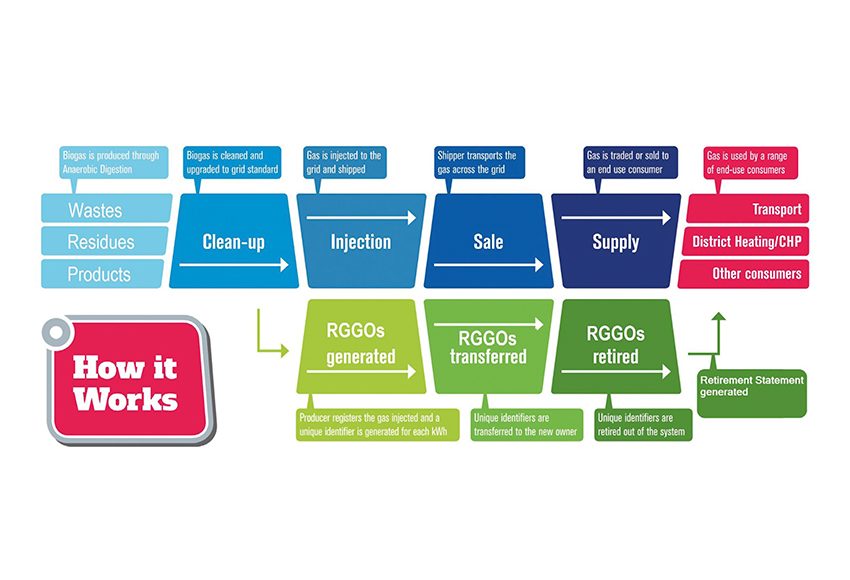Why are they important?
The Renewable Gas Guarantees of Origin (RGGOs) are certificates which represent 1 kWh of Green Gas injected into the grid in Europe. The green gasses included into the RGGOs are the biomethane, the bio-propane, and the hydrogen. Still, biomethane represents the largest portion of the market.
Renewable Gas Guarantees of Origin (RGGOs)
When a gas consumer buys a RGGO, the gas used is matched with a unit of green gas that was produced and injected into the same grid. This displaces units of fossil gas and promotes the production of green gas.
As the Renewable Energy Certificates (REC) (for more information, read our RECs article), the RGGOs do not track the physical flow of green gas. However, gas consumers who buy RGGOs can claim to have consumed that green gas, and hold the associated environmental benefits.
According to the characteristics of the gas produced during a given period by a producer, each RGGO contains relevant information. Some of the main characteristics described in a Renewable Gas Guarantees of Origin are:
- Plant Name.
- Capacity.
- Production Process.
- Type of Gas Produced.
- Start and end date of injection.
- Classification of the biomass used in the process as a waste, residue, or product/co-product.
- Sustainability Criteria Met.
Biomethane
The main type of green gas produced in Europe is biomethane. Biomethane plants work with the anaerobic digestion process, by breaking down organic matter with bacteria in an oxygen-free environment.
The organic matter used for this process can come from different sources, such as arable crops grown close to the plant, food waste collected from homes and restaurants, and wastewater treatment plants.
Network operators closely monitor the biomethane injected, ensuring it has the correct composition and can be used in existing pipelines and gas appliances.
UK and the Green Gas Certification Scheme (GGCS) registry and how does it work?
In the UK RGGOs are issued, transferred, and retired within the Green Gas Certification Scheme (GGCS). The GGCS registry allows green gas producers to capture the value of their product and provides an instrument for consumers to show they are using green gas.
This mechanism enables companies and households to support biomethane production and, where applicable, lower their reported carbon emissions.
GGCS guarantees that each RGGO represents a kWh of green gas injected into the grid, and that when it is retired by a consumer, it cannot, at any point in the future, be sold to any other consumer.
Participants in the Green Gas Certification Scheme (GGCS)
Gas producers hold accounts on the GGCS Registration Database, where they can issue RGGOs based on the amount of green gas they have produced. Gas producers must provide the GGCS robust evidence of their green gas production and independent verification of their meter readings and GHG calculations.
Any interested party, including consumers, can open trading accounts in the GGCS registry, where they can receive RGGOs from producers, send and receive RGGOs from other traders, and allocate them to end-gas consumers point where the RGGOs are retired.

At ALLCOT Trading, our mission is to promote additional sustainable impact with every transaction. If you want to know more and also have an extra positive impact on the environment by trading with us, contact us and together we will make it happen.



